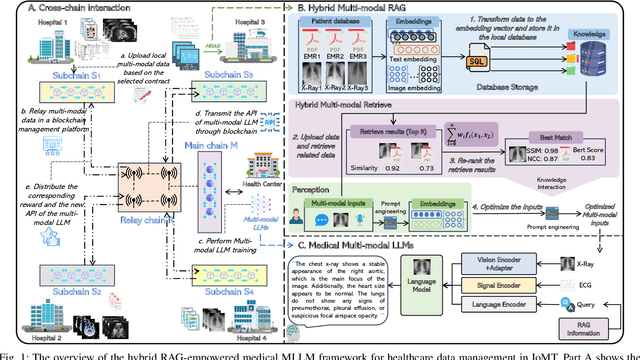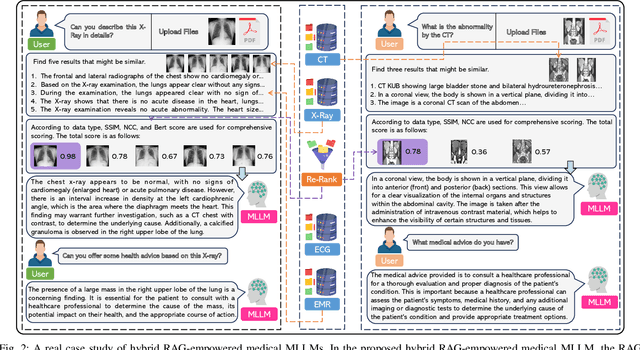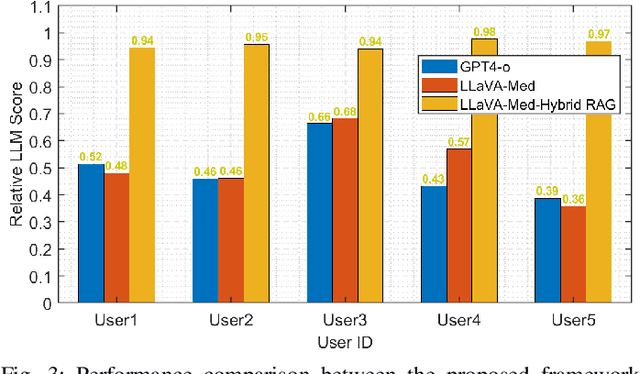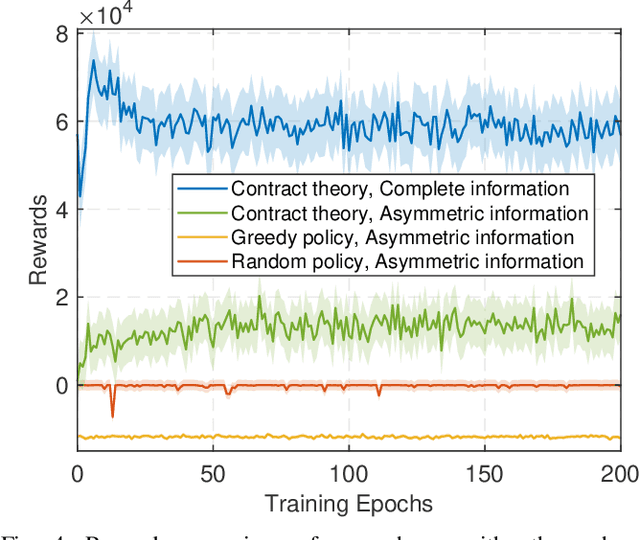M. Shamim Hossain
Bi-LSTM based Multi-Agent DRL with Computation-aware Pruning for Agent Twins Migration in Vehicular Embodied AI Networks
May 09, 2025Abstract:With the advancement of large language models and embodied Artificial Intelligence (AI) in the intelligent transportation scenarios, the combination of them in intelligent transportation spawns the Vehicular Embodied AI Network (VEANs). In VEANs, Autonomous Vehicles (AVs) are typical agents whose local advanced AI applications are defined as vehicular embodied AI agents, enabling capabilities such as environment perception and multi-agent collaboration. Due to computation latency and resource constraints, the local AI applications and services running on vehicular embodied AI agents need to be migrated, and subsequently referred to as vehicular embodied AI agent twins, which drive the advancement of vehicular embodied AI networks to offload intensive tasks to Roadside Units (RSUs), mitigating latency problems while maintaining service quality. Recognizing workload imbalance among RSUs in traditional approaches, we model AV-RSU interactions as a Stackelberg game to optimize bandwidth resource allocation for efficient migration. A Tiny Multi-Agent Bidirectional LSTM Proximal Policy Optimization (TMABLPPO) algorithm is designed to approximate the Stackelberg equilibrium through decentralized coordination. Furthermore, a personalized neural network pruning algorithm based on Path eXclusion (PX) dynamically adapts to heterogeneous AV computation capabilities by identifying task-critical parameters in trained models, reducing model complexity with less performance degradation. Experimental validation confirms the algorithm's effectiveness in balancing system load and minimizing delays, demonstrating significant improvements in vehicular embodied AI agent deployment.
ViT Enhanced Privacy-Preserving Secure Medical Data Sharing and Classification
Nov 08, 2024


Abstract:Privacy-preserving and secure data sharing are critical for medical image analysis while maintaining accuracy and minimizing computational overhead are also crucial. Applying existing deep neural networks (DNNs) to encrypted medical data is not always easy and often compromises performance and security. To address these limitations, this research introduces a secure framework consisting of a learnable encryption method based on the block-pixel operation to encrypt the data and subsequently integrate it with the Vision Transformer (ViT). The proposed framework ensures data privacy and security by creating unique scrambling patterns per key, providing robust performance against leading bit attacks and minimum difference attacks.
Hybrid RAG-empowered Multi-modal LLM for Secure Healthcare Data Management: A Diffusion-based Contract Theory Approach
Jul 01, 2024



Abstract:Secure data management and effective data sharing have become paramount in the rapidly evolving healthcare landscape. The advancement of generative artificial intelligence has positioned Multi-modal Large Language Models (MLLMs) as crucial tools for managing healthcare data. MLLMs can support multi-modal inputs and generate diverse types of content by leveraging large-scale training on vast amounts of multi-modal data. However, critical challenges persist in developing medical MLLMs, including healthcare data security and freshness issues, affecting the output quality of MLLMs. In this paper, we propose a hybrid Retrieval-Augmented Generation (RAG)-empowered medical MLLMs framework for healthcare data management. This framework leverages a hierarchical cross-chain architecture to facilitate secure data training. Moreover, it enhances the output quality of MLLMs through hybrid RAG, which employs multi-modal metrics to filter various unimodal RAG results and incorporates these retrieval results as additional inputs to MLLMs. Additionally, we employ age of information to indirectly evaluate the data freshness impact of MLLMs and utilize contract theory to incentivize healthcare data holders to share fresh data, mitigating information asymmetry in data sharing. Finally, we utilize a generative diffusion model-based reinforcement learning algorithm to identify the optimal contract for efficient data sharing. Numerical results demonstrate the effectiveness of the proposed schemes, which achieve secure and efficient healthcare data management.
Generative Model-Driven Synthetic Training Image Generation: An Approach to Cognition in Rail Defect Detection
Dec 31, 2023



Abstract:Recent advancements in cognitive computing, with the integration of deep learning techniques, have facilitated the development of intelligent cognitive systems (ICS). This is particularly beneficial in the context of rail defect detection, where the ICS would emulate human-like analysis of image data for defect patterns. Despite the success of Convolutional Neural Networks (CNN) in visual defect classification, the scarcity of large datasets for rail defect detection remains a challenge due to infrequent accident events that would result in defective parts and images. Contemporary researchers have addressed this data scarcity challenge by exploring rule-based and generative data augmentation models. Among these, Variational Autoencoder (VAE) models can generate realistic data without extensive baseline datasets for noise modeling. This study proposes a VAE-based synthetic image generation technique for rail defects, incorporating weight decay regularization and image reconstruction loss to prevent overfitting. The proposed method is applied to create a synthetic dataset for the Canadian Pacific Railway (CPR) with just 50 real samples across five classes. Remarkably, 500 synthetic samples are generated with a minimal reconstruction loss of 0.021. A Visual Transformer (ViT) model underwent fine-tuning using this synthetic CPR dataset, achieving high accuracy rates (98%-99%) in classifying the five defect classes. This research offers a promising solution to the data scarcity challenge in rail defect detection, showcasing the potential for robust ICS development in this domain.
Deep Anomaly Detection for Time-series Data in Industrial IoT: A Communication-Efficient On-device Federated Learning Approach
Jul 19, 2020



Abstract:Since edge device failures (i.e., anomalies) seriously affect the production of industrial products in Industrial IoT (IIoT), accurately and timely detecting anomalies is becoming increasingly important. Furthermore, data collected by the edge device may contain the user's private data, which is challenging the current detection approaches as user privacy is calling for the public concern in recent years. With this focus, this paper proposes a new communication-efficient on-device federated learning (FL)-based deep anomaly detection framework for sensing time-series data in IIoT. Specifically, we first introduce a FL framework to enable decentralized edge devices to collaboratively train an anomaly detection model, which can improve its generalization ability. Second, we propose an Attention Mechanism-based Convolutional Neural Network-Long Short Term Memory (AMCNN-LSTM) model to accurately detect anomalies. The AMCNN-LSTM model uses attention mechanism-based CNN units to capture important fine-grained features, thereby preventing memory loss and gradient dispersion problems. Furthermore, this model retains the advantages of LSTM unit in predicting time series data. Third, to adapt the proposed framework to the timeliness of industrial anomaly detection, we propose a gradient compression mechanism based on Top-\textit{k} selection to improve communication efficiency. Extensive experiment studies on four real-world datasets demonstrate that the proposed framework can accurately and timely detect anomalies and also reduce the communication overhead by 50\% compared to the federated learning framework that does not use a gradient compression scheme.
 Add to Chrome
Add to Chrome Add to Firefox
Add to Firefox Add to Edge
Add to Edge